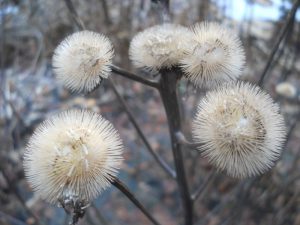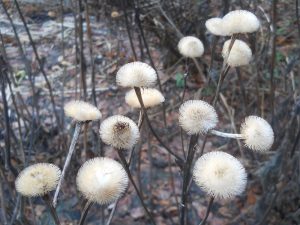A cold winter puts strain on the food resources that the gardens’ bird population depends on. Capsules on the spent herbaceous flower stalks are one source of food that is ideal for seed eating birds. The giant Inula magnifica a member of the family Compositae and native to the Caucasus can be seen in the herbaceous border. Observe these flower stalks set with seed heads that have been picked over and denuded of all seed by nimble beaked birds. All that is left are the bleached receptular bracts set over the cap of the composite flower plate.
The Scottish Government through the Scottish Rural Development Programme offers grants to manage and improve rural, farming and coastal habitats for the benefit of seed eating birds. This helps preserve ecosystems which by their dynamic nature are constantly changing and of ultimate benefit to us all.
At home your garden can add value as a wildlife corridor. Hedges composed of mixed native species and especially untended hedge bases are natural tower blocks of biodiversity; nesting and roosting birds, bugs and insects, grubs and moths, wasps and bees are all housed here. Consider replacing a boundary fence with a living community. Alternatively or in addition plant a mixed shrub border and throw away your secateurs. There is nothing better than a mass of intertwined shoots and branchwork to create shelter and seclusion for bird life. It also allows the leaf debris to fall unmolested to the soil and become a deep layer of humus rich organic matter.


